You beat cancer or you are in the fight, but the mirror is now a stressor. That is not vanity. It is a very human response to hormone therapy and everything that came before it. If you are on exemestane, you might notice weight shifts, hair changes, joint stiffness, or dryness that mess with how you feel in your skin. This guide gives you clear, doable steps that ease symptoms and help you rebuild body confidence, without pretending this is easy. Expect a mix of medical facts, practical hacks, and ways to take control today.
- TL;DR: You are not imagining it. Aromatase inhibitors can change fat distribution, hair, skin, joints, and mood. There are fixes for each.
- Quick wins: soften joint pain with consistent movement and heat or ice, choose forgiving fabrics, use silicone lubricants, and treat scalp early.
- What works best: strength training twice a week, 7 to 9 thousand steps most days, protein 1.2 to 1.6 g per kg, good sleep, and talking honestly with your team.
- When to call the clinic: new fractures, severe mood changes, sudden swelling, chest pain, or if symptoms make you want to stop treatment.
- Support is huge: peer groups, pelvic floor physio, counseling with CBT or ACT, and survivorship programs here in Calgary can change the day-to-day.
What changes exemestane can bring-and why
Exemestane lowers estrogen hard. That is the point, and it helps prevent hormone receptor positive breast cancer from coming back. Lower estrogen also explains most of the body changes you feel and see.
Common physical changes:
- Weight and shape shifts. Many notice more belly weight and less muscle tone. This is partly from menopause level hormones and lower activity during treatment.
- Joint and muscle pain or stiffness. Often hands, knees, hips. It peaks in the morning or after sitting. Oncologists call it AI-associated arthralgia.
- Hair changes. Scalp thinning in a more androgen pattern, sometimes new facial hair. Brows and lashes can look sparse.
- Skin and vaginal dryness. Vaginal dryness can sting and affect sex and daily comfort.
- Hot flashes and night sweats. These mess with sleep, mood, and cravings.
- Bone loss risk. Estrogen protects bone, so AIs raise fracture risk. BMD needs a plan.
None of this means you are doing something wrong. The pattern is predictable enough that major groups like ASCO, ESMO, and the Canadian Cancer Society talk about it in guidelines. The upside: research now shows several things help, and you can start most of them without waiting on a prescription.
Daily-life upgrades: clothes, grooming, intimacy, comfort
Feeling better in your skin rarely starts in the gym. It starts in the closet, the bathroom cabinet, and in small daily choices that ease friction and restore a sense of control.
Clothes that work with a changing body:
- Pick stretch and drape. Think soft waistbands, wrap styles, and darker tops if hot flashes are a thing. Fabrics that breathe help when sweat hits.
- Size for comfort, not a number. Buy two sizes and return what does not feel good. Tailoring a cheap piece can make it look custom.
- If you had surgery, get fit for a pocketed bra or a light prosthesis. Post-mastectomy bras and camisoles distribute weight and improve posture. A proper fit often reduces shoulder and neck pain.
- Footwear matters. Cushioned, rocker-bottom shoes reduce forefoot pressure and ease knee and hip stiffness.
Grooming that protects thinning hair and dry skin:
- Scalp care: switch to gentle shampoos, avoid daily heat, and try 5 percent minoxidil foam once daily if your oncologist approves. Early is better than late. Low-level light therapy caps can be a helpful add-on.
- Facial hair: threading, dermaplaning, or laser hair removal work. Topical eflornithine slows growth. Ask before using hormonal antiandrogens.
- Brows and lashes: brow powders or microblading for brows, tubing mascaras for lashes. Castor oil hydrates but does not regrow hair. Be kind to lids.
- Skin barrier: thick, fragrance-free creams after showers. Look for ceramides and urea 5 to 10 percent for rough patches. Sunscreen daily. Dry brushing is optional; moisturizer is not.
Intimacy and pelvic comfort without white-knuckling it:
- Lubricant for sex, moisturizer for daily comfort. Silicone lubricants last longer. Polycarbophil or hyaluronic-acid moisturizers help the tissue itself.
- If non-hormonal options are not enough, ask about vaginal DHEA or low-dose vaginal estrogen. Recent guidance from gynecology and oncology groups allows case-by-case use with shared decision-making.
- Pelvic floor physical therapy can help with pain, tightness, and arousal. In Calgary, ask your cancer centre or family doctor to refer.
- Scripts that make talking easier: try saying I want closeness but I need slow, low-pressure touch tonight. Let us try massage, then see what we both want.
Comfort tools you can deploy today:
- For joints: warm showers in the morning, microwavable heat packs, paraffin baths for hands, and light compression gloves. Save ice for flares after activity.
- For sleep: cool the room, breathable bedding, and a bedside fan or cooling pillow insert. A short breathing routine lowers night sweats impact on sleep.
- For hot flashes at work: dress in layers, keep a cold water bottle at hand, and have a spare top in your bag. Simple, but it reduces stress.
Mind tricks that actually land: body neutrality beats forced positivity. Instead of I must love my body, try My legs got me through chemo and get me to the coffee shop. Quick daily checks with that tone add up.
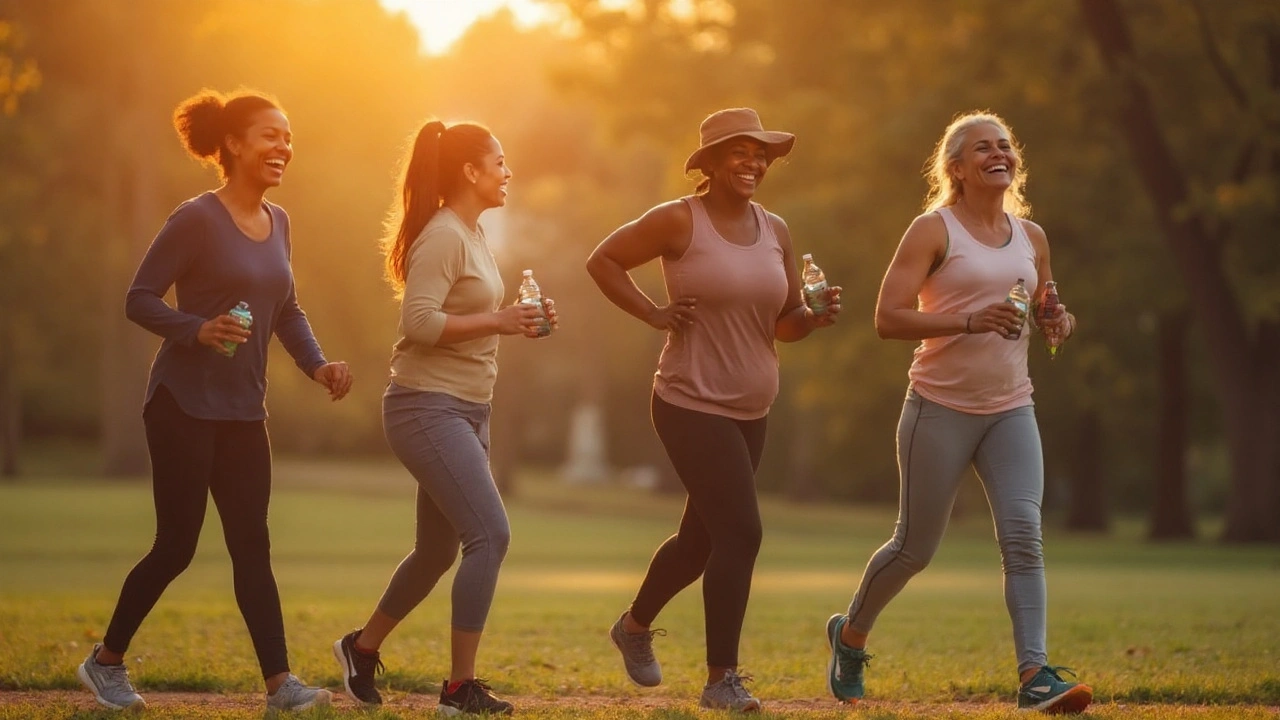
Movement, food, and symptom hacks that pay off
The single best lever for body image on AIs is consistent movement. It reduces pain, helps sleep, preserves bone, and nudges weight in the right direction. You do not need to crush it. You need to repeat it.
Your simple 4-week starter plan:
- Week 1: Track your baseline without judgment. Steps, sleep, and pain scores morning and night 0 to 10. Walk 10 minutes daily. Add gentle hand and hip mobility after you brush your teeth.
- Week 2: Start strength. Two days this week, 20 minutes each. Squats to a chair, wall pushups, rows with a band, calf raises. One set of 8 to 12 reps is fine to start. Keep the 10-minute daily walk.
- Week 3: Bump walks to 20 minutes five days per week. Add a second set to your strength work. Try a pool session or a bike if joints ache.
- Week 4: Keep the routine. Increase one thing by 10 percent no more. Book a bone density scan if you have not had a baseline. Review pain scores with your team.
Targets and rules of thumb:
- Steps: 7 to 9 thousand on most days is realistic and helps mood. On flare days, protect the streak with a 5-minute walk anyhow.
- Strength: twice weekly, 6 to 8 movements that hit legs, push, pull, and core. Progress by reps, not weight, at first.
- Balance: add 30 seconds per side single-leg stance while dinner cooks. It helps fall risk if bone density drops.
Nutrition that supports body changes without obsessing:
- Protein: aim 1.2 to 1.6 grams per kg body weight daily. Split it across meals. A palm of protein at each meal gets you close. Protein preserves muscle and steadies hunger.
- Produce and fiber: fill half your plate with veggies or fruit. Fiber helps hot flashes and weight control by steadying blood sugar.
- Fats: include olive oil, nuts, and fatty fish twice a week. Omega-3s may ease joint aches for some people.
- Calcium and vitamin D: roughly 1200 mg calcium and 1000 to 2000 IU vitamin D per day for most adults on AIs. Check your levels with your doctor. In Canada, vitamin D is often low, especially in winter.
- Alcohol: if hot flashes are spicy or sleep is bad, try two alcohol-free weeks. Many people see a big difference fast.
Evidence-backed symptom levers you can ask about:
- Joint pain: duloxetine reduced AI joint pain in the SWOG S1202 trial. Acupuncture showed modest benefit in a 2017 JAMA study. Some do better after switching to another AI.
- Hot flashes: venlafaxine, citalopram, and gabapentin have data. Paroxetine interacts with tamoxifen, but that is not an issue with exemestane.
- Bone health: baseline bone density scan, repeat every 1 to 2 years. If you are osteopenic or breaking bones, ask about bisphosphonates or denosumab. Weight-bearing and resistance training remain the base.
- Sleep: treat it like a medical tool. Aim for a regular wake time and a cool, dark room. CBT for insomnia has strong evidence and works better than pills long term.
Supplements: keep it simple. Vitamin D and calcium for bone as needed. Omega-3s can be worth a 6 to 8 week trial for joint pain. Be cautious with anything hormonal or marketed for menopause. Always clear supplements with your oncology team.
Mini‑FAQ: quick answers to the tricky stuff
Will strength training bulk me up or make joint pain worse? No and no. Start light, focus on range of motion and control, and progress slowly. Most people report less pain after 4 to 6 weeks.
Is it worth treating hair thinning if I am still on therapy? Yes. Early scalp care and minoxidil can slow loss and improve fullness. It takes 3 to 6 months to see change. Laser caps add a small boost for some.
Can I use vaginal estrogen or DHEA on exemestane? Maybe, with care. Non-hormonal options come first. If that fails, shared decision-making with your oncologist and gynecologist is the path. Recent specialty guidance allows low-dose local therapy for severe symptoms after risks are reviewed.
What if weight changes trigger old disordered eating? Tell your team. Ask for a referral to a dietitian trained in oncology and eating disorders and a therapist who uses CBT-E or ACT. You can request weight-neutral care.
Are AI side effects a sign the drug is not working or that cancer is back? Side effects reflect estrogen changes, not cancer activity. If something feels off or new, call your team. They would rather hear early.
Can I switch meds if body image is wrecked? Yes. Some do better on a different AI or on tamoxifen, depending on your cancer details. Do not stop on your own. Book a side-effect visit and bring your symptom log.
How often should I get bone checks? Most people on AIs get a baseline bone density scan and a repeat every 1 to 2 years. Frequency depends on your baseline T-score, age, and fracture risk.
Is therapy worth it if my issue is physical? Yes. CBT and ACT help reduce distress, improve body image, and keep you moving while symptoms settle. Brief courses work. If cost is a barrier, ask your cancer centre about group programs and free options.
Where can I find support here? In Calgary, look for cancer-specific peer groups through the Canadian Cancer Society, Rethink Breast Cancer, Wellspring, and programs at the Calgary Cancer Centre.

Next steps and troubleshooting by scenario
Use this as a decision tree when things feel stuck.
If morning stiffness makes you dread getting out of bed:
- Before sleep: lay out clothes, set a heating pad timer for 20 minutes before your alarm, and place water at the bedside.
- On waking: do 5 minutes of gentle joint circles in bed, then a warm shower. Take your first walk within 30 minutes to prevent the pain from setting in.
- Talk to your team about duloxetine or acupuncture if stiffness remains high after 4 to 6 weeks of movement.
If weight went up and none of your clothes fit:
- Buy two stretchy basics today that fit your current shape. Comfort first. Fighting your closet is energy you need elsewhere.
- Track protein and steps for two weeks. Do not cut calories hard. Add one strength session per week before you think about food rules.
- Review meds that may add weight with your doctor. Some antidepressants and sleep meds do.
If hair thinning is getting obvious:
- Start minoxidil foam once daily after medical clearance. Take a photo now and every month to track change.
- Switch to a soft part and lighter hair color for the illusion of density. A topper or volumizing fibers can bridge the gap.
- Ask your team about getting iron, ferritin, thyroid, and vitamin D checked. Low levels worsen shedding.
If sex hurts or you avoid it:
- Use a vaginal moisturizer every second day and a silicone lube for sex. Try a small set of vaginal dilators under the guidance of a pelvic physio if penetration hurts.
- Book a visit to discuss local estrogen or DHEA if symptoms stay severe after 6 to 8 weeks. Bring your symptom notes.
- Talk to your partner outside the bedroom. Set a plan for pressure-free connection like massage or shared baths.
If the mirror is a trigger:
- Cover full-length mirrors for now. Use a small mirror for makeup or shaving only. This is not denial; it is triage.
- Daily practice: name one function you are grateful for and one sense-based pleasure you plan to give your body today. Keep it practical, not poetic.
- If thoughts get dark, try a short burst of CBT with a therapist or a digital program. Apps like MindShift CBT from Anxiety Canada are a good start.
If you are new to exemestane:
- Ask your oncology team for a baseline bone density scan date, a plan for joint symptoms, and a contact for side-effect check-ins.
- Set up a simple tracking note in your phone for hot flashes, sleep, pain, and mood. Patterns beat memory.
- Book movement in your calendar like an appointment. Ten minutes counts.
When to call your care team fast:
- New or sudden chest pain, shortness of breath, or severe headache.
- Signs of fracture - new back pain after a minor twist, sudden hip pain, or height loss.
- Depression with hopelessness or any thought of self-harm.
- Side effects so rough you are thinking about stopping your medication.
Body-image SOS checklist to keep handy:
- Layered outfit ready for flash days.
- Water bottle, travel deodorant wipes, spare top in your bag.
- Heat pack and compression gloves near your favorite chair.
- Silicone lube and a gentle vaginal moisturizer at the bedside.
- Sleep kit - fan, eye mask, and a 4-7-8 breathing note card.
- Movement plan for low and high pain days written on the fridge.
Notes on credibility and care: The patterns and fixes here reflect guidance from oncology and menopause societies, including ASCO and ESMO, and patient resources from the Canadian Cancer Society. Exercise and CBT have the most consistent support for improving quality of life on aromatase inhibitors. Duloxetine and acupuncture have specific evidence for joint pain. Vaginal symptoms respond to non-hormonal treatments, with local hormonal options considered after a careful risk talk. Bone health needs a baseline scan and a repeat plan.
Last thing. Your body has been through a lot. The goal is not to snap back. It is to build a life and a look that fit who you are now. Small wins compound. The mirror will start to feel less like a report card and more like a check-in.


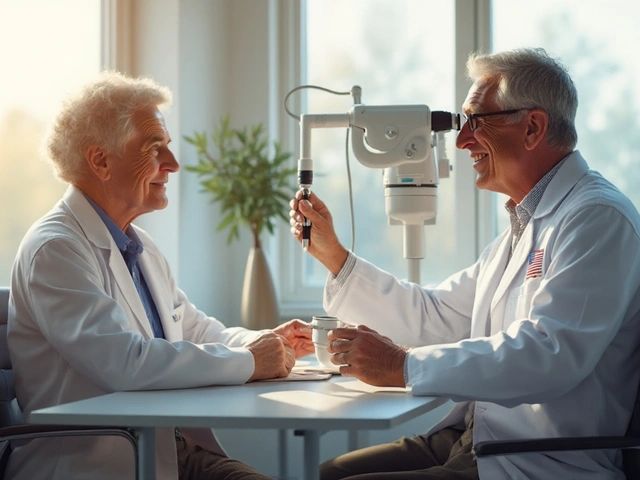
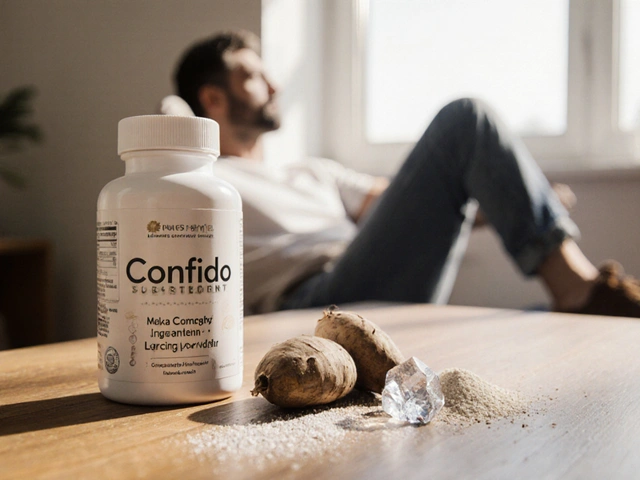

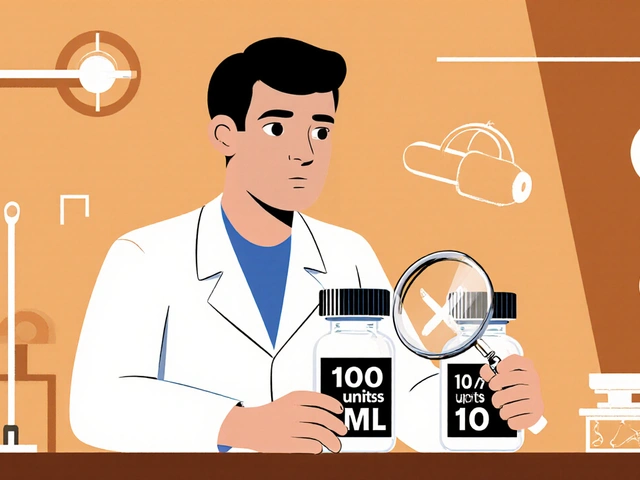
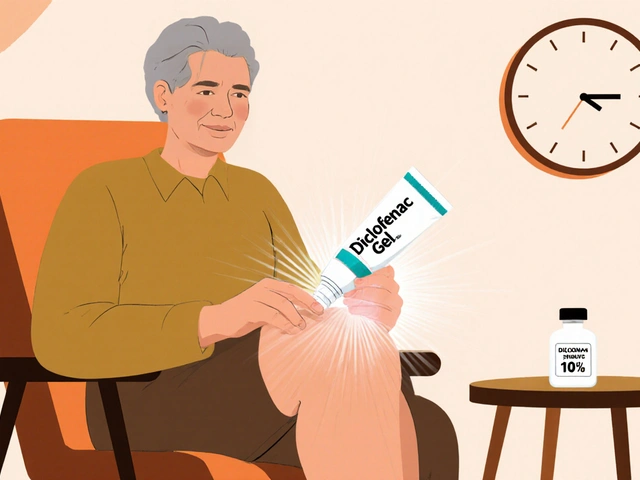
Jasmine Kara
30 August 2025 - 22:42 PM
i just started exemestane last month and holy hell the joint pain is real. i’ve been walking 10 mins a day like the post said and it’s not magic but it’s something. also bought those compression gloves and i wear them while watching tv. feels like my hands are finally mine again.
Richie Lasit
31 August 2025 - 22:29 PM
yo this is the kind of post i wish i had 2 years ago. strength training twice a week changed everything for me. not about getting jacked, just about not feeling like a ghost in my own skin. also, minoxidil foam? game changer. my brows are back. not perfect, but enough to stop crying in the mirror. you’re not broken, you’re adapting. keep going.
arthur ball
1 September 2025 - 12:08 PM
okay but let me just say-this article didn’t just give me tips, it gave me my life back. i was about to quit exemestane because i felt like a stranger in my own body. then i tried the pelvic floor physio (yes, really) and now i can sit through a movie without feeling like my insides are being stapled shut. also, the ‘body neutrality’ thing? i say ‘my legs carried me to coffee’ instead of ‘i hate my thighs.’ small wins, people. they add up. i cried reading this. not sad tears. relieved ones.
Harrison Dearing
3 September 2025 - 09:35 AM
lol this is just a fancy ad for duloxetine and minoxidil. everyone knows AIs wreck you. but why are we acting like this is some new discovery? i’ve been on this drug for 5 years and i’ve seen the same ‘tips’ recycled since 2018. also, who’s paying for all these ‘pelvic floor physio’ referrals? #cancerindustry
Justice Ward
3 September 2025 - 10:55 AM
the part about covering the full-length mirror hit me like a truck. i did that last week. it didn’t make me feel better instantly-but it gave me space. space to breathe, space to not be judged by my own reflection. i started saying ‘my hands held my kid today’ instead of ‘my arms look like sticks.’ it sounds stupid, but it’s the first time in a year i didn’t feel like a ghost. thank you for writing this like a human, not a textbook.
bhuvanesh kankani
3 September 2025 - 19:56 PM
As a man from India, I have never experienced hormonal therapy myself, but I have seen many women in my community struggle silently with these side effects. Your guide is not only practical but deeply compassionate. In our culture, such topics are rarely discussed openly. This post gives dignity to those who suffer without voice. Thank you for your clarity and courage.
maria norman
5 September 2025 - 00:12 AM
So let me get this straight: you’re telling me the solution to estrogen deprivation is… more protein, more steps, and a silicone lubricant? Wow. Groundbreaking. Next you’ll tell me breathing helps with air. Meanwhile, my oncologist still thinks ‘just stay positive’ is a legitimate treatment plan. I’m just here waiting for the pharmaceutical company to sell me a $300 ‘Exemestane Recovery Kit’ with a branded stress ball.
Iris Schaper
6 September 2025 - 08:26 AM
i read this and i thought… what if none of this works? what if the steps, the protein, the heat packs, the minoxidil… what if it’s all just distraction? what if the real problem is that our bodies are just… broken now? and we’re being sold bandaids while the system ignores the real cost? i don’t know. i just miss who i was. not because of vanity. because i don’t recognize the silence in my own skin anymore.
katerine rose
8 September 2025 - 00:38 AM
you all are overcomplicating this. just stop taking it. duh. they say it prevents recurrence but how many people actually die from it vs. just feeling like crap? i stopped and my hair grew back in 3 months. my joints stopped screaming. my skin stopped cracking. cancer can wait. my dignity cant
Selma Cey
9 September 2025 - 11:53 AM
is it just me or is this entire guide written like a sponsored post from a wellness influencer who’s never had cancer? where’s the data that ‘walking 7k steps’ actually prevents bone loss? where’s the peer-reviewed study that says ‘darker tops’ reduce hot flash anxiety? this feels like emotional manipulation wrapped in bullet points.
Francis Pascoe
9 September 2025 - 15:57 PM
they told me to ‘be strong’ so i did. i lifted weights through joint pain. i wore compression socks until my skin bled. i smiled while my hair fell out in clumps. and now? i’m still here. but i’m not ‘strong.’ i’m exhausted. and no one tells you that surviving doesn’t mean healing. this post? it’s the first thing that didn’t make me feel like a failure.
Richa Shukla
10 September 2025 - 23:30 PM
wait so now we're supposed to believe that minoxidil and silicone lube are the only things keeping us alive? what about the truth? they're using exemestane because they want to control women's bodies not cure cancer. i know a girl who died after taking this. her doctor said 'it's just side effects' but her organs were shutting down. why are we not talking about the real danger? this guide is a distraction.
Chris Rowe
12 September 2025 - 19:28 PM
u wrote a 2000 word essay on how to feel better while your body is falling apart… and yet still didn’t mention that 60% of women on AIs develop depression. no therapy? no SSRIs? just… walk more? lol. nice try.